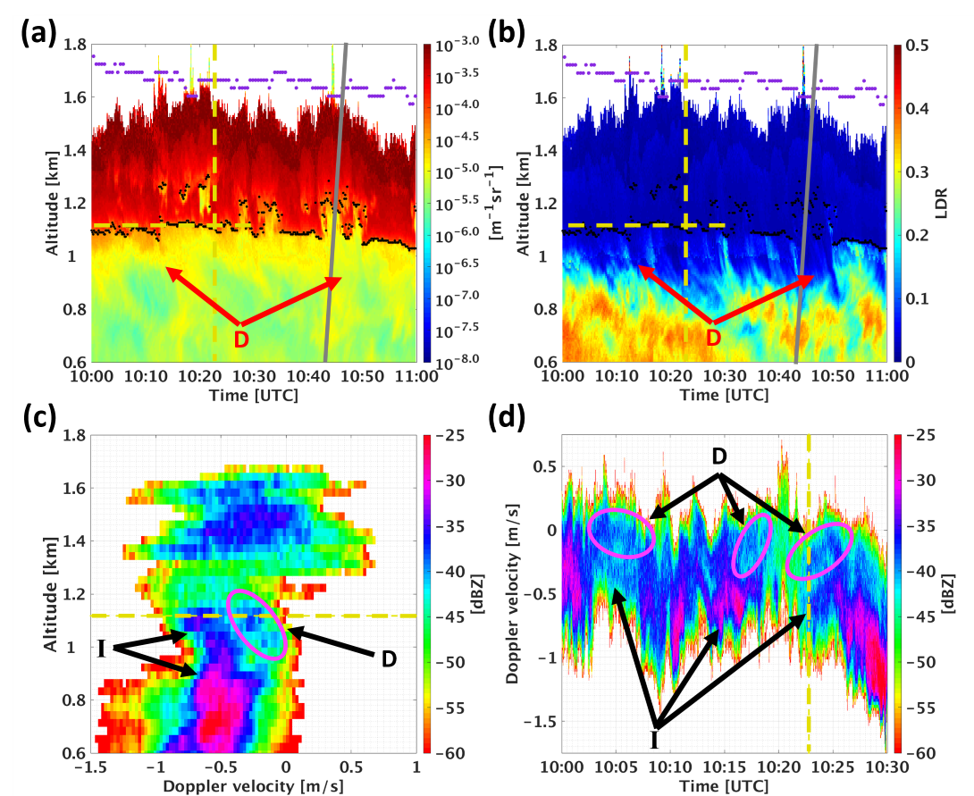Highly supercooled drizzle may be a common feature over Antarctica and the Southern Ocean
Submitter
Silber, Israel — Pacific Northwest National Laboratory
Fridlind, Ann M. — Goddard Institute for Space Studies
Area of research
Cloud-Aerosol-Precipitation Interactions
Journal Reference
Science
Drizzle redistributes water in the atmospheric column, and thereby influences cloud life cycle, optical depth, and surface radiative forcing. The rarity of reports of brief and spatially limited drizzle at temperatures below -20°C suggests that riming and temperature-dependent cloud microphysical processes such as heterogeneous ice nucleation and depositional growth conspire to prevent drizzle persistence under such supercooled conditions. However, remote-sensing measurements taken on August 16, 2016, at McMurdo Station, Antarctica as part of the U.S. Department of Energy ARM West Antarctic Radiation Experiment (AWARE) field campaign revealed persistent drizzle over 7.5 hours from a shallow, mixed-phase cloud layer with temperatures ranging between -25°C at cloud base and -29°C at cloud top. Large-eddy simulations (LES) constrained by the measurements were used to evaluate the conditions required to support such persistent and highly supercooled drizzle.
Impact
Ground-based, satellite, and reanalysis data show that drizzle was likely present in parts of a widespread cloud field, which stretched more than ~1000 km along the Ross Ice Shelf coast. The LES model results indicate that activated ice nucleating particle (INP) and accumulation-mode aerosol number concentrations on the order of 0.2 L-1 and 20 cm-3, respectively, could support such quasi-steady supercooled drizzle production. The observationally constrained simulations further indicate that the drizzle moisture flux through the cloud base may have exceeded that of ice despite the degree of supercooling. Overall, this study suggests that persistent drizzle at such low temperatures may be common at the low aerosol and INP concentrations typical of the Antarctic and Southern Ocean atmospheres.
Summary
We identify a persistent drizzle event at temperatures below -25°C, detected over McMurdo Station, Antarctica. From the Eulerian perspective of the observations, we show that such supercooled drizzle may form at various liquid water path values and ice nucleation and growth rates. Satellite and reanalysis data indicate that the August 16, 2016 drizzle formation event was possibly widespread along the Ross Ice Shelf coast.
LES sensitivity tests show that persistent drizzle may form at such low temperatures regardless of the large-scale ascent magnitude, provided that (i) conditions are conducive to the formation of a sufficiently thick stratiform cloud layer, and (ii) activated aerosol and INP concentrations are sufficiently low. In those cases, drizzle may comprise a substantial moisture sink from a highly supercooled cloud layer and may be associated with the formation of multiple peaks in cloud water content profiles.
Based on the observational and model analyses, the aerosol conditions necessary for such supercooled drizzle can occur simultaneously with atmospheric temperatures below -25 °C and above the homogeneous freezing temperature regime around winter and summer months near the Antarctic coasts and the inner Antarctic continent, respectively, as well as over the Southern Ocean, particularly during austral winter. This study, therefore, suggests that persistent supercooled drizzle formation events may be rather common over Antarctica and the Southern Ocean.


